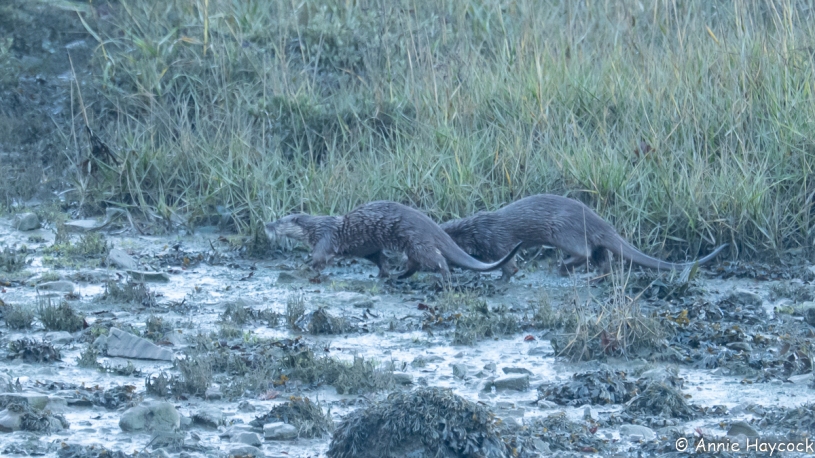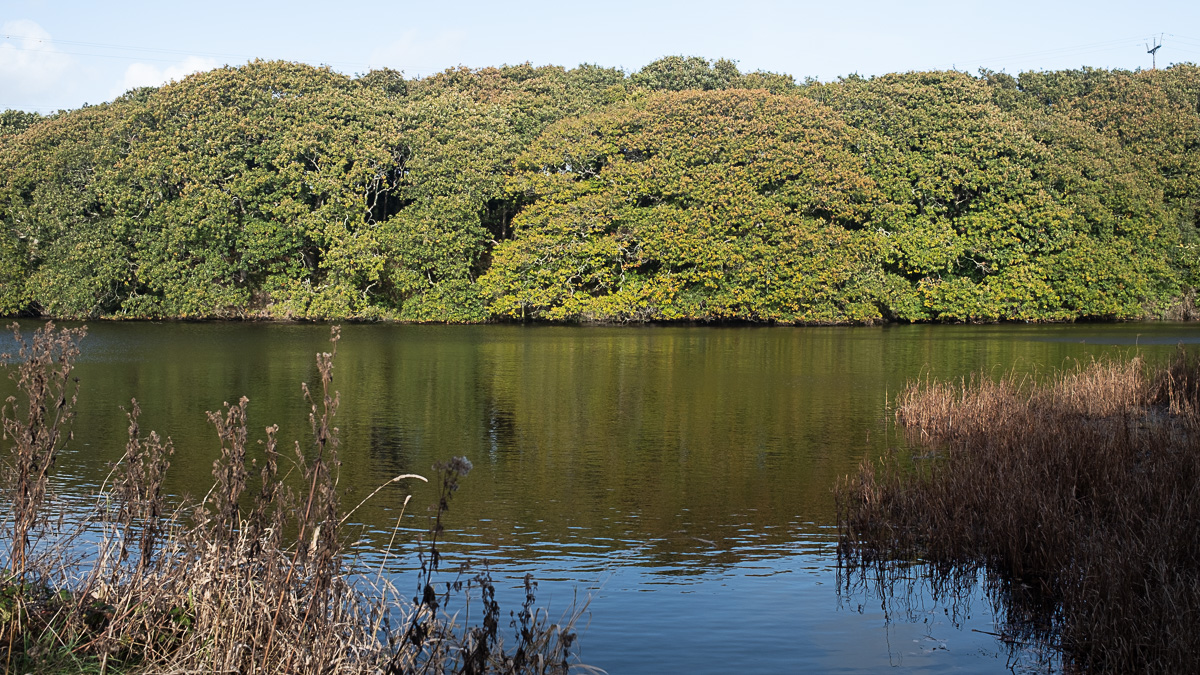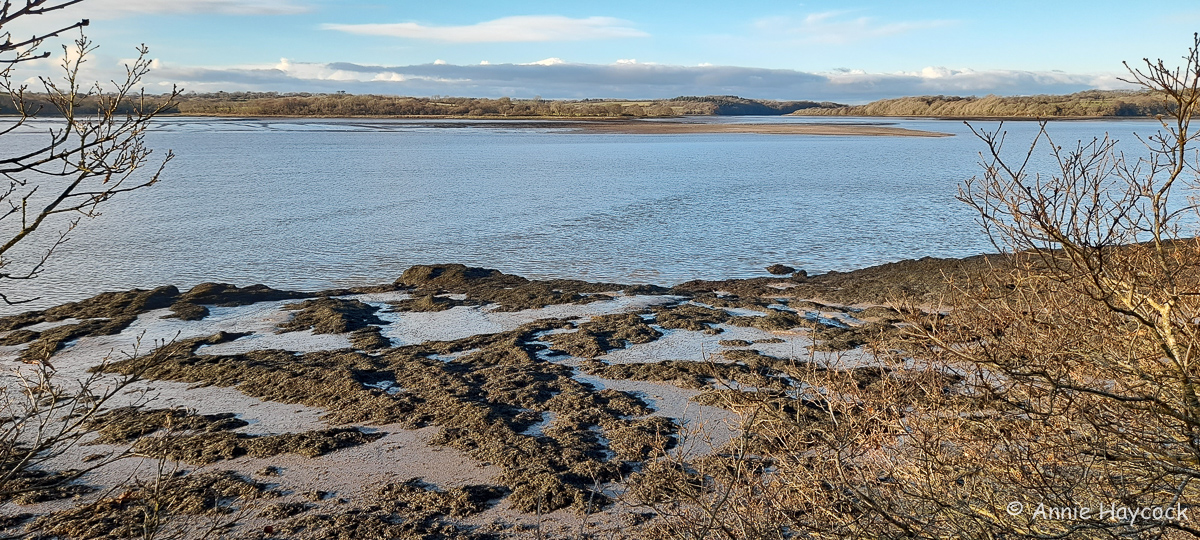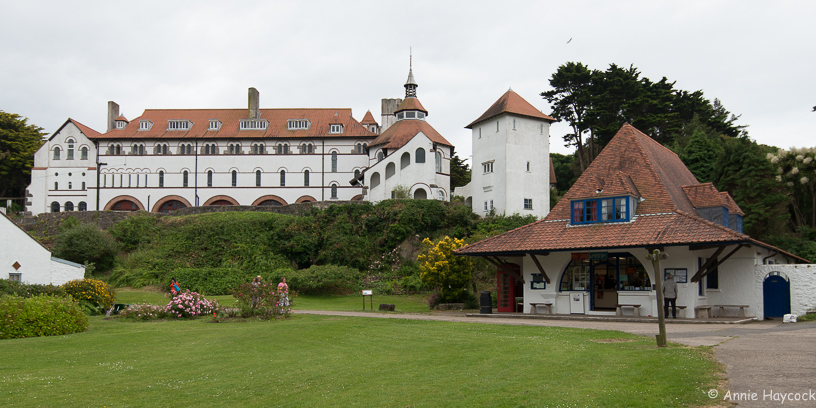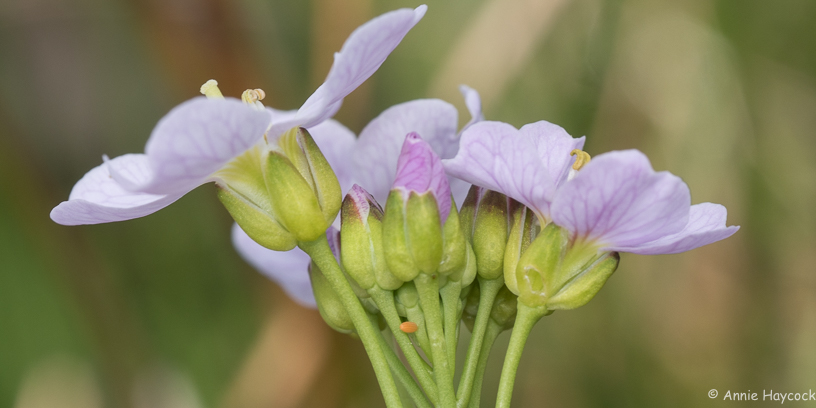Another hard frost this morning – that’s three in a row, and with temperatures having dipped to -6C overnight, the idea of driving anywhere did not appeal. Driving anywhere would mean at least four miles of unsalted, winding and undulating roads. We decided to put safety first, and not do all of our Wetland Bird Survey counts today. We’d stick to the easy one at Landshipping Quay, one that we could walk to – where there was enough grassy verge that we didn’t have to risk slipping and sliding on the icy blacktop.
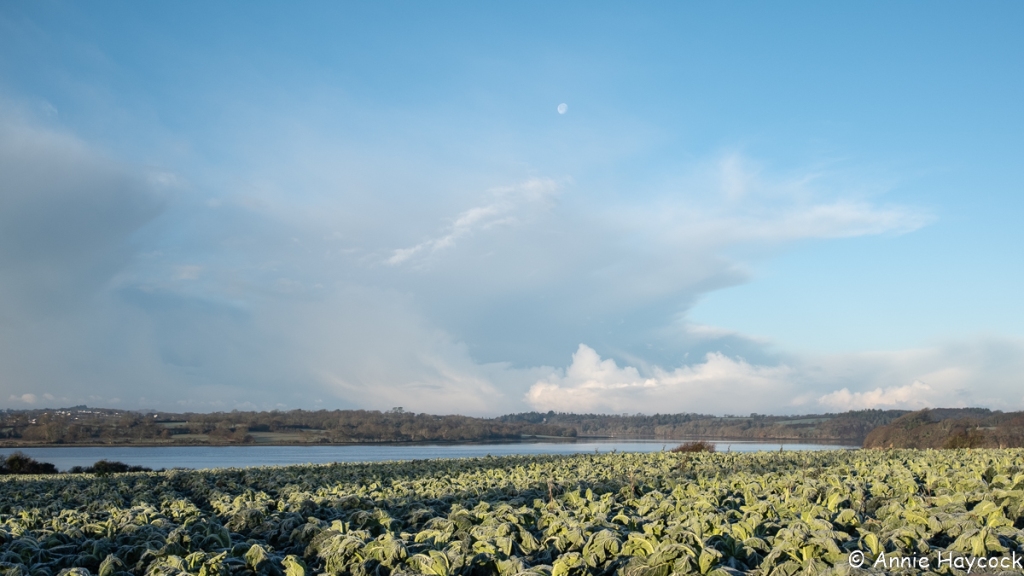
The high pressure system from the north meant generally clear, crisp light, but always with the risk that some of those clouds could dump a load of freezing rain or sleet. And that is the moon above the clouds. The crop wilting under the frost is cauliflower – last winter this field was full of leeks.

We’d started counting the birds when I caught sight of something different. As it disappeared beneath the surface, the tail gave it away as an otter. The trail of bubbles moved towards the shore, and then two otters surfaced – probably mother and a half-grown cub. They crossed the saltmarsh, and disappeared into a gap in the rocks above the high tide line. This bit of shore was in the shade, so I wasn’t expecting much from the photos.
We continued south, checking the estuary at every opportunity – every gap in the trees – and then along a section of foreshore. Mallard, teal, wigeon, all in small numbers. Three of the five great crested grebes we had seen earlier. Groups of Canada geese flying downstream and landing on the far side – somebody else’s count patch. As we headed back to the Quay, Bob saw another diving bird, he was sure it was a diver, but which one. He hurried ahead and confirmed it was a great northern – if we get divers this far up the estuary, they are usually great northern.
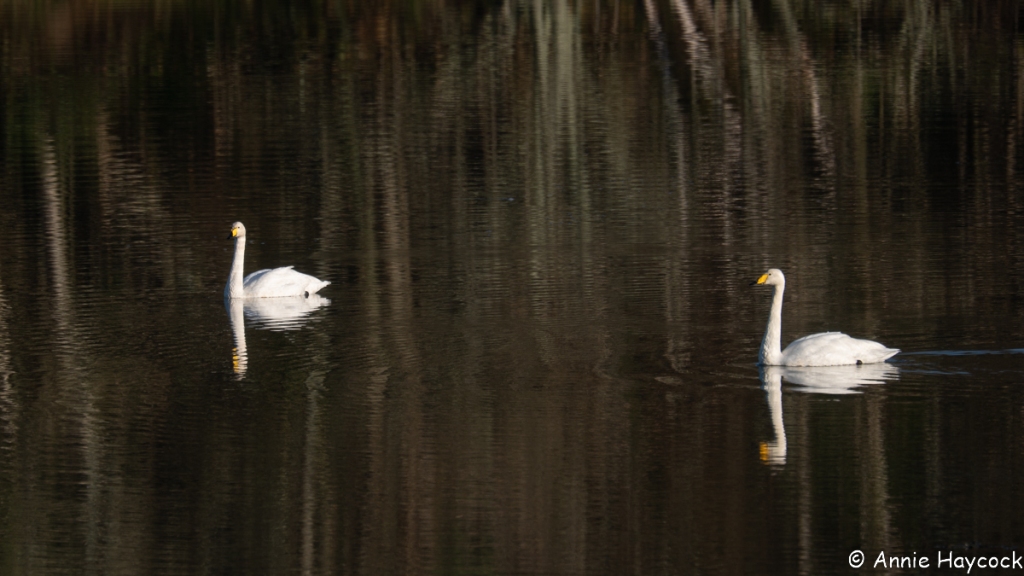
As I arrived, two swans flew almost over his head and landed in Millar’s Pond. They did not look like mute swans, which we occasionally get here (out of 50 or so on the estuary as a whole), and a closer look revealed they were whoopers – the first I have seen here in nearly 35 years of counting. While trying to photograph them, I realised the gloves I was wearing were totally unsuitable for operating the camera as they kept hitting the wrong button, and also that I hadn’t checked the settings so the otter photos would probably be just a blur (though they don’t look too bad when seen as small pictures)
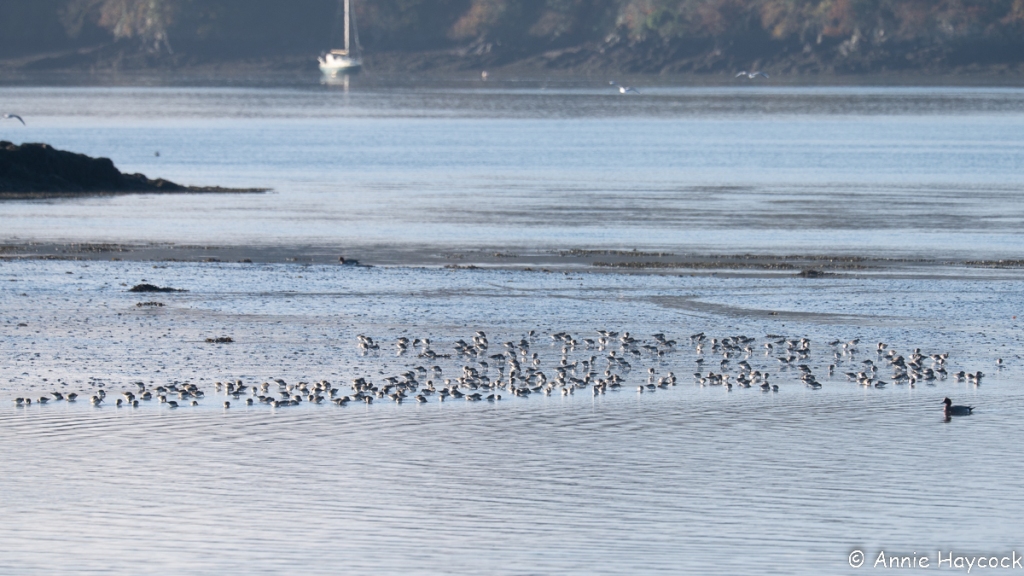
Back out by the Quay, the dunlin and other waders had moved off their high tide roost (the bit of rock sticking out on the left – part of the Quay itself built for loading coal onto barges when there was a coal mine extending under the estuary) onto the mudflats where they were easier to count. About 300 dunlin in the photo, plus a handful of redshank and curlew. The lapwing that had also been on the roost earlier had gone elsewhere.
